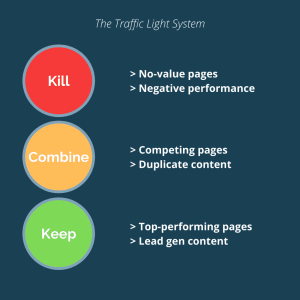Anyone who has ever had to send an email marketing campaign will know “The Fear” – the sense of dread you get when you personally are about to hit the go button on an email that is going to be received by potentially thousands and thousands of people. This fear also never leaves you. I have been sending email for 11 years now and I’m still very nervous when I send out emails. I always say, “there is ALWAYS time for another preview!”. Sometimes even to clients. I often test and retest to myself just to make sure I have got every last mistake fixed before the final send. But mistakes do happen to everyone at some point. It’s how you deal with these mistakes which is more important.
there is ALWAYS time for another preview!
Large retailers, and other big brands will most likely have many departments working on an email from the design department, to marketing, to pricing, to legal. All these people will need to have input into a campaign before it even reaches the email marketing department. Content can often change before an email has even started to be previewed. Prices can change, links can change, terms and conditions change, new artwork can be supplied, businesses need to react to competitor prices. All these things can lead to mistakes creeping into a campaign. The email coding can also go wrong. The email might break in outlook, unclosed tags might break a link, the list is almost endless. It can be difficult to manage all these moving parts in a complex email build, preview and send process.
Speed
Let’s imagine you’ve sent a campaign and someone has just noticed a mistake in the email. Act as quickly as you can. Very large campaigns can often run for several hours to help with deliverability. It might be possible in some cases to stop a campaign before is has finished sending, therefore limiting the number of people who receive the broken email. This must always be the first task, don’t email the client yet! Don’t fix the mistake! Just get that campaign stopped. Most modern email platforms should allow you to do this.
Platform tricks
It is possible for some email platforms to alter links and even images for emails that have already been sent. In some instances it might be possible to alter a link within the email platform even though it was incorrect in the email and allow the campaign to finish sending. In other instances you can change an image. People who have not opened the email yet will then see the correct image when they open it. If a campaign is stopped it is important to separate the data of people who have received the error and those who did not receive the campaign at all. Set up and send the people who didn’t receive the email with the corrected campaign as soon as possible. Once you have that send completed you can come back to deal with the people who received the error.

Honesty
If you have stopped the campaign or it has been sent already it’s now time to own up to your mistake. Speak directly with your client and any other stakeholders in the campaign. It is vitally important that everyone involved knows the full details of the issue, how it happened, how many people were affected and how many people are still to be emailed. Depending on the scale of the error, and also the type of mailing, the response to it might vary. Businesses often apologise via email, ignore the error or send a replacement campaign. If the error is just a broken link it might be possible for a redirect on the clients site to save that traffic. If there is a problem in the terms and conditions, the error might have a large financial impact on the business. Getting all the stakeholders in the campaign involved is crucial not only to rapidly reach a solution but also to create the correct response to the error.
Assess the damage and repair
If the email was visually broken in a specific email client, or there was just a small spelling mistake it might be best, just to ignore it. Highlighting a tiny error and apologising for it can be more harmful to a brand. If the error is more substantial like a broken link or a pricing error an apology email or new email correcting the error might be more suitable. Remember tone is very important at this stage. Brands should ideally drop any playful, silly or comic aspects to their language that they might normally employ. Speak concisely and openly to convey reassurance and honesty. Apologise if need be but don’t grovel. It never works well and doesn’t help correct the error. A mistake might even allow you to further express your brand’s character with a new offer, a give-away or some other special apology which might make the subscribers not only forgive you but like the brand more.
Email is fleeting
It is important also to remember that mistakes will happen and do happen. Especially if many people are involved in the creation process. It is also important to remember that people also will receive the email and you will often find they are more forgiving or even don’t notice. More often than not, more than you might expect. Lastly, email is a very fast paced medium and a campaign’s life-cycle in terms of from when it is sent to the end of its life-cycle is measured in hours. When mistakes happen it is important to remember it is not the end of the world, it may feel like it is if you are the person who hits the send button but today’s emails are just tomorrow’s fish and chip paper.
Prevent it happening again
It is important to carefully evaluate how the error happened in the first place. It might be possible to amend your process or put in checks and altered procedures to prevent an error happening again. Make your client aware of the changes you are making to prevent the error from happening again. I have previously written how important it is to have a robust testing process. Seek help from others and make use of tools, from spell checks to email testing apps like litmus and Email on Acid. Remember, there is always time for another preview and good luck out there.
Digital & Social Articles on Business 2 Community(96)







